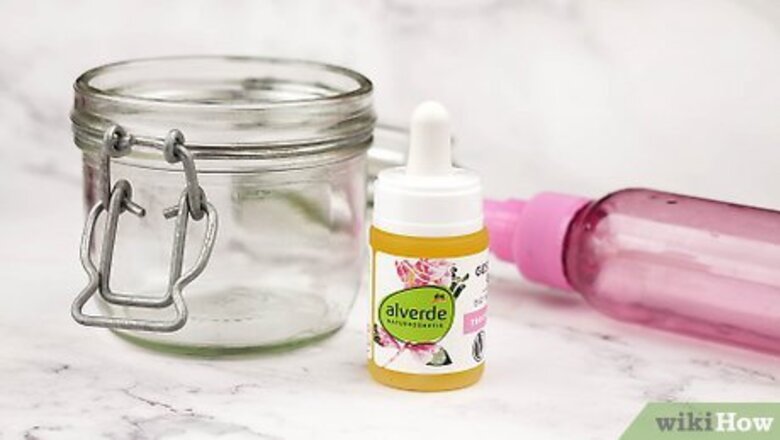
views
X
Expert Source
Joanna KulaLicensed Esthetician
Expert Interview. 9 July 2019.
This article will show your four ways to make your own rosewater.
Making Rosewater with Essential Oil
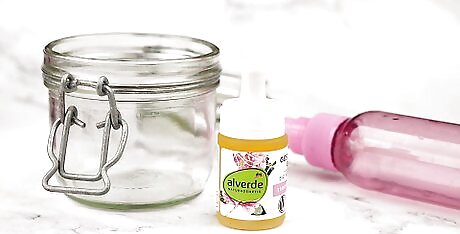
Gather your supplies. In addition to the rose essential oil and distilled water, you will also need a glass jar; if you are going to use this as a misting spray, then you will also need a misting bottle. Make sure that the bottle is made from glass or high-quality plastic. Avoid metal or low-quality plastic.
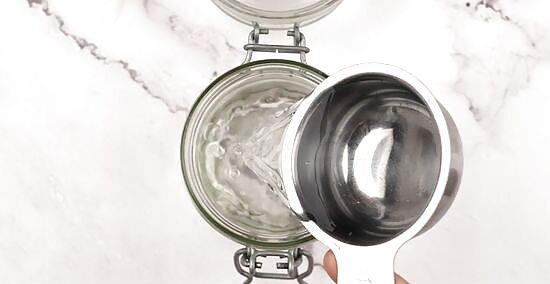
Fill the jar with water. Be sure to use distilled water instead of tap water; tap water often has bacteria in it. If you cannot find distilled water anywhere, then boil some filtered water and let it cool back down to room temperature.
Add 12 drops of rose essential oil. You will have to dilute this in a couple of teaspoons of vodka first or it will just float on top of the water. Make sure that you are using pure essential oil, and not fragrance oil. Fragrance oil will only give you the smell, and none of the benefits found in roses and pure essential oils.
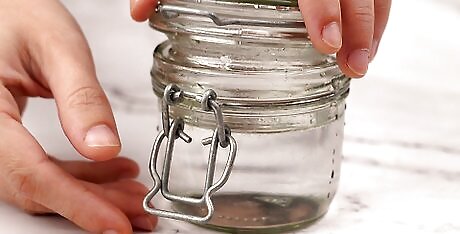
Close the jar tightly and shake it. Do this for a few moment to mix the oil into the water.
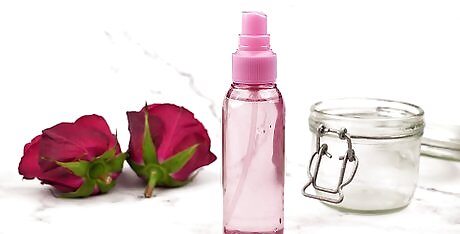
Consider transferring the rosewater to another container. You can leave the rosewater in the jar, or you can pour it through a funnel into a misting bottle and use it to freshen your linens or your face.
Making Rosewater with Dried Petals
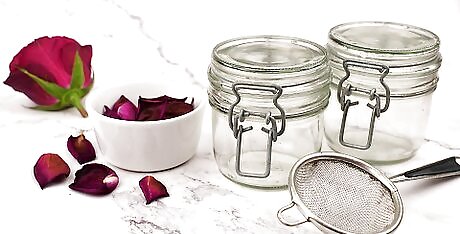
Gather your supplies. In addition to the dried rose petals and hot water, you will also need two glass mason jars and a strainer.
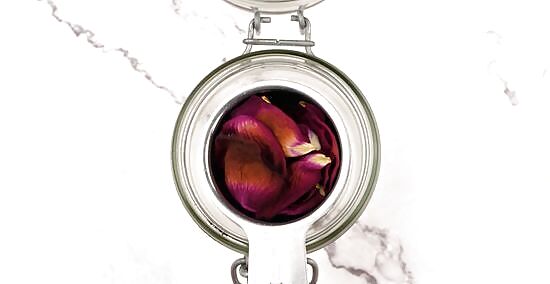
Put the dried rose petals into one of the jars. If you want to use this water for cooking, then consider getting dried petals from edible roses, such as Rosa damascena, Rosa Centifolia and Rosa Gallica. They will give you the best taste.
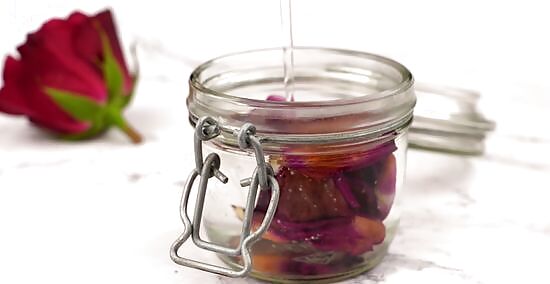
Pour hot, but not boiling, water over the petals. Make sure that you are using distilled water, which is free of any bacteria. If you cannot find distilled water, then you can use filtered water instead.
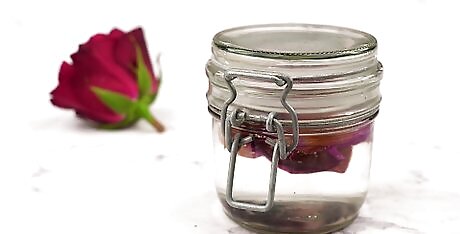
Cover the jar and let the water cool. This will take about 10 to 15 minutes, depending on the temperature of the room.
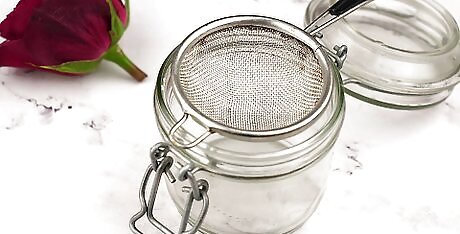
Put a strainer over the empty jar. You will be transferring the rosewater into this jar; the strainer will catch the rose petals.
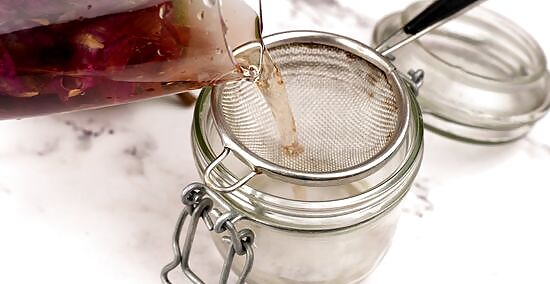
Pour the rosewater into the jar. Carefully put the water in the strainer, so that the water flows into the empty jar and the petals get caught in the strainer. Once all of the water is in the new jar, you can discard the petals.
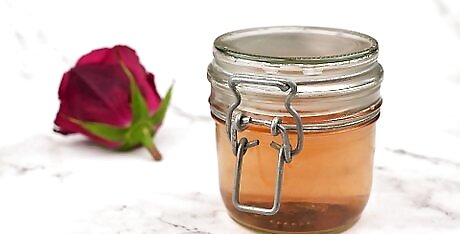
Seal the jar and store it in the fridge. You will need to use this rosewater within one week if you leave it at room temperature, or else it will expire. Put the container in the fridge and store it for up to 3 months.
Making Rosewater with Fresh Petals
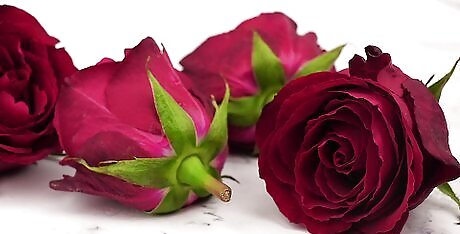
Select some fresh, fragrant roses and rinse them. The fresher your roses are, the better results you will get. Try to use organic, pesticide-free roses; even though you will be washing them later on, there is no guarantee that you will be able to completely rinse all of the chemicals off. Also, try to use just one type of rose; each type has its distinctive smell, and you may not get good-smelling results by mixing them. Be sure to rinse the rose well to get rid of any dirt, insects, and pesticides. If you wish to use the rosewater for cooking, consider using some edible roses types, such as: Rosa damascena, Rosa Centifolia and Rosa Gallica.
Pull the petals off and discard the rest of the rose. You will need enough petals to fill one cup. This should take about two roses, depending on the size of the rose.
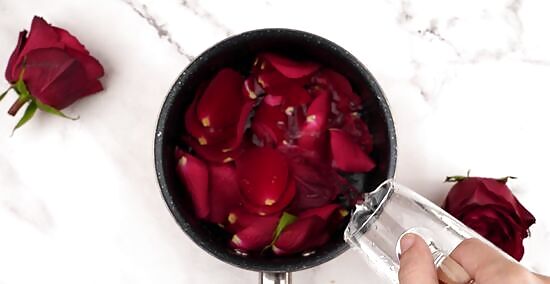
Place the petals into a saucepan and pour water over them. Make sure that the petals are evenly distributed, and that the water level does not come too far past the petals. If you use too much water, your rosewater will be less fragrant. Consider adding up to one teaspoon of vodka. This will not affect the smell, but it will help preserve the rosewater and make it last longer.
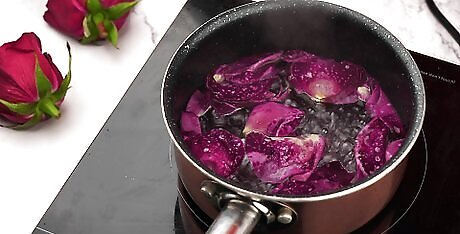
Cover the pot with a lid and set the heat to "low." Do not let the water come to a boil or a simmer; using too much heat will ruin the color and other properties. After about 20 minutes, you will see the petals become paler, and the water take on the color of the petals.
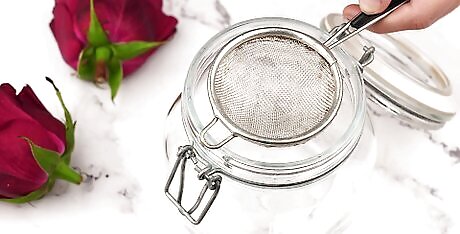
Place a strainer over a large mason jar. Make sure that the jar is very clean, and that it is big enough to hold about 2 cups (475 milliliters) of water. You will be using the strainer to catch the petals.
Pour the rosewater into the jar. Using both hands, hold the pot over the jar and tip it carefully. Slowly pour the water and petals through the strainer and into the jar. The water will pass through the strainer, and the petals will get caught in it. Consider filling a smaller bottle with some of the rosewater. A smaller bottle will be easier to handle than a large mason jar. When you run out of rosewater, simply refill it with more rosewater from the big jar.

Store in the refrigerator. The rosewater will keep for only a week at room temperature, but it lasts about 2–3 months in the fridge. If you added vodka, it should last a bit longer.
Making Rosewater with Crushed Petals
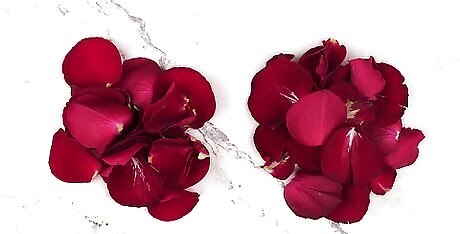
Divide the rose petals into two piles. You will crush one pile first, and use the other one later.
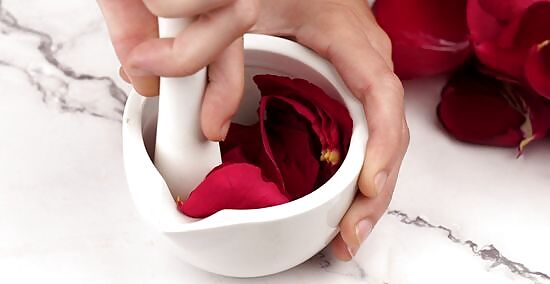
Grind the first pile using a mortar and pestle. As you crush the petals, they will release juice; you will be using this juice to make your rosewater. You can also rub the petals against a strainer; simply place the strainer over a jar, and scrub the petals across the mesh using the back of a spoon.
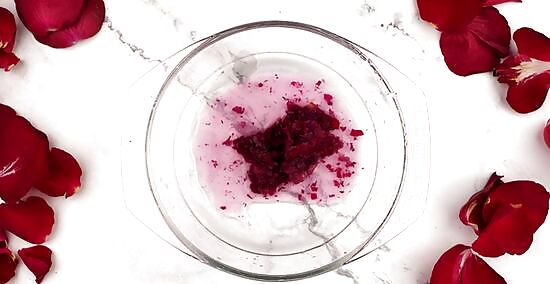
Put the rose water and crushed petals into a ceramic bowl. You can also use a glass jar or bowl. Leave the rose water and petals in the bowl for a few hours; this allows the liquid to become even more saturated.
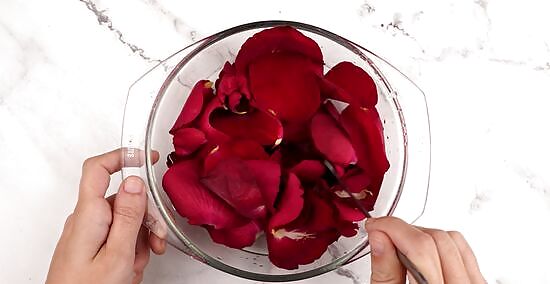
Add the rest of the petals and let them sit for 24 hours. Stir the fresh petals through the crushed ones. Cover the bowl and let it sit undisturbed for 24 hours.
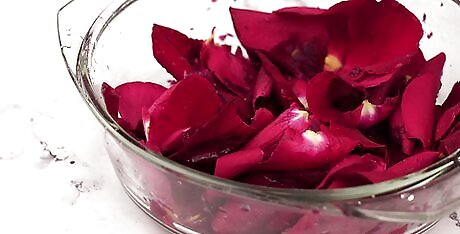
Transfer the rose water and petals to a glass or ceramic saucepan. Don't use metal pot; this will react with the oils.

Simmer the rose water and petals over low heat. Place the saucepan on the stove and set the heat to low. Bring the rose petals to a simmer. Once you start to see bubbles, remove the pot from the burner.
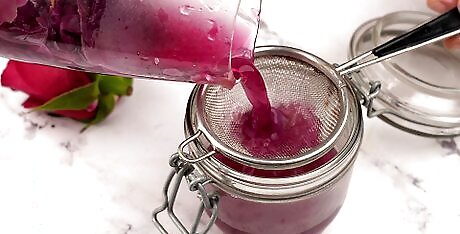
Pour the rosewater into a jar through a strainer. You can also use a coffee filter or a muslin cloth. Keep doing this until there are no more specks of petal in the rosewater. If you wish to use the rosewater as a toner, then dilute it with some distilled water until you get the strength you like.
Seal the jar and leave in a sunny spot for a few hours. The heat of the sun will help draw out the natural, beneficial oils.

Store the rose water in the refrigerator. Use the water within one week if you leave it at room temperature, or it will expire. Otherwise, you can store it in the fridge for up to 3 months.















Comments
0 comment